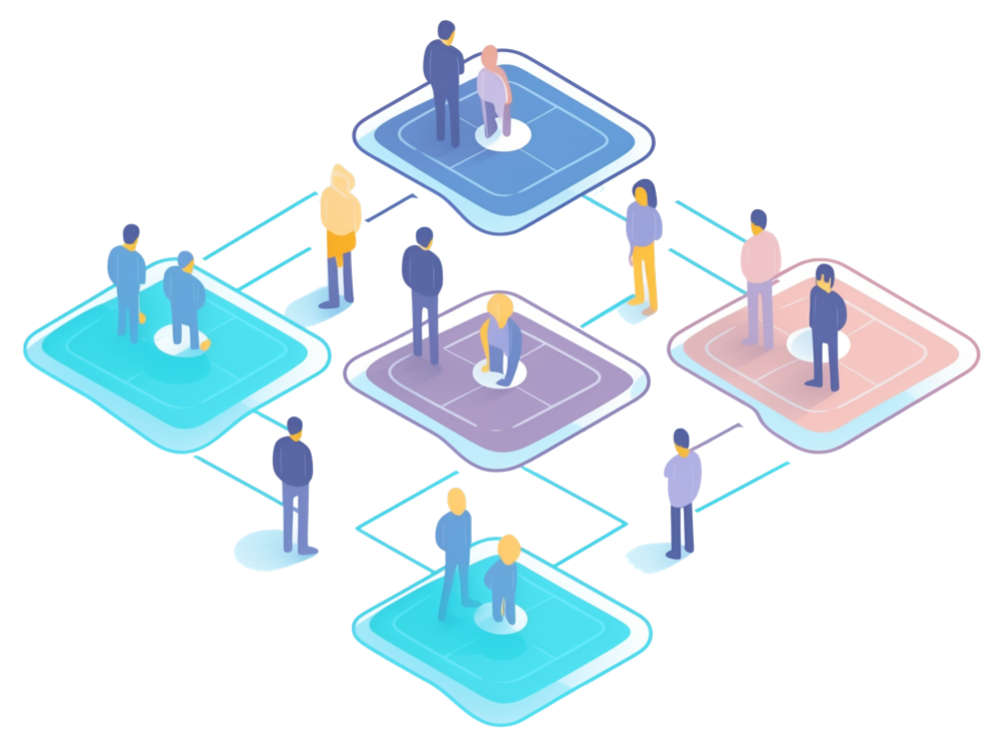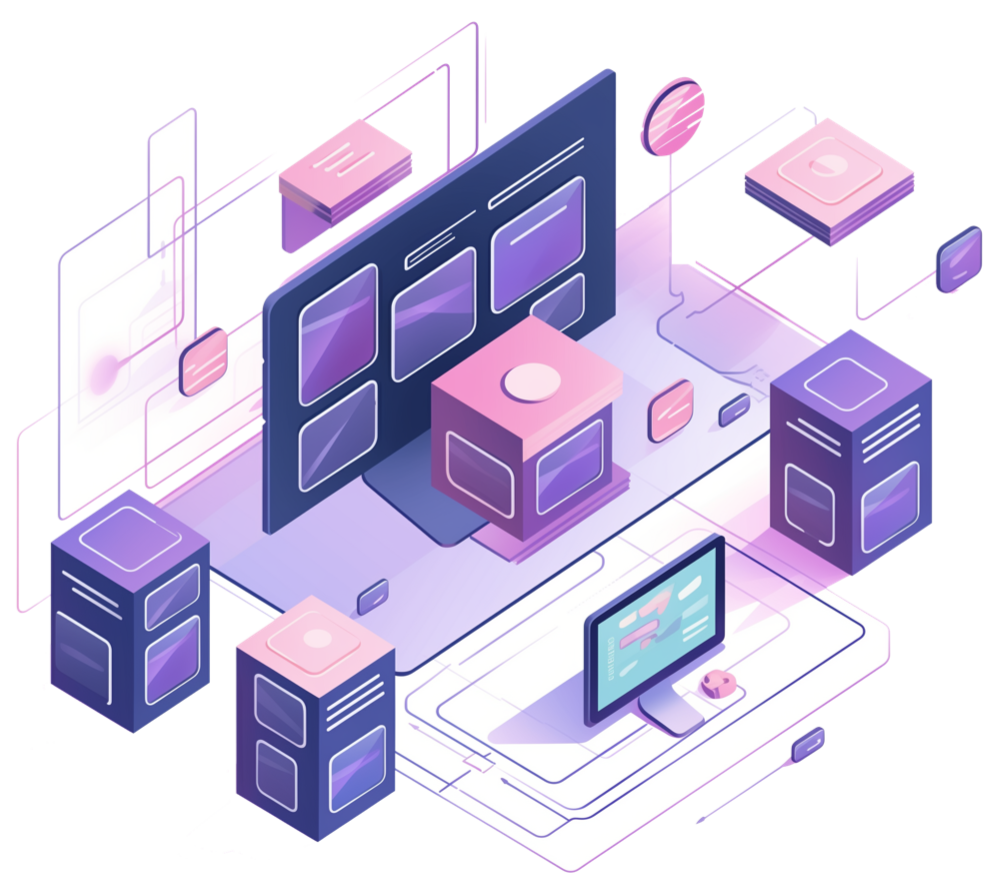Product Teams

In the Product Operating Model, the cornerstone of success is an empowered, cross-functional Product Team. These teams tackle essential customer and business opportunities, driving innovation and delivering impactful outcomes. However, creating such effective teams requires a strategic approach, focusing on several critical components.
The foundation of a high-performing Product Team is the culture in which it operates. For teams to reach their full potential, the organization must prioritize outcomes over output, instill a sense of ownership, and encourage collaboration. By concentrating on the value and results delivered rather than merely completing tasks or launching features, team members are empowered to take responsibility for their work and its contribution to the product’s success. Promoting open communication, teamwork, and the exchange of ideas further drives innovation and effective problem-solving. A culture that emphasizes these principles creates an environment where Product Teams can thrive and excel.
For Product Teams to develop robust solutions, they must encompass the right blend of Team Roles, each addressing specific risks and responsibilities. The Product Manager is responsible for the value and viability risks, holding overall accountability for the product's outcomes. The Product Designer tackles the usability risk and is accountable for every interaction users and customers have with the product, ensuring a seamless experience. The Tech Lead focuses on feasibility risk, overseeing the product's delivery and ensuring technical excellence. Product Leadership provides overarching support, setting the team up for success through recruiting, coaching, empowerment and servant leadership, ensuring alignment with the broader organizational desired outcomes. Leadership is responsible for an inspiring Product Vision and an overall Product Strategy defining the opportunities to be solved. 5
The structure and organization of Product Teams, known as Team Topology, are crucial for smooth operations. Effective team topology involves ensuring there are sufficient teams to handle the workload without overwhelming any single team, precisely defining each team’s responsibilities to avoid overlap and confusion, and ensuring each team possesses all the necessary skills to achieve their goals. Understanding and managing dependencies between teams is essential to prevent bottlenecks and delays. Properly structuring the teams maximizes their efficiency and productivity.
As products grow in size and complexity, Scaling Teams becomes necessary. However, scaling must be done thoughtfully to maintain agility and minimize dependencies. The secret to scaling Product Teams lies in modularizing your product using Domain Driven Design coupled with Microservice architecture. This approach ensures that a product team can own a value stream end-to-end, delivering value to customers effectively.
By designing your system this way from the outset, you can greatly reduce the turmoil that would occur if you have to reorganize the product later. Breaking down the product into smaller, independent modules allows teams to work autonomously. Establishing strong communication protocols ensures seamless information flow between teams, while decentralized decision-making empowers teams to make decisions within their domain, reducing the need for cross-team approvals.
Services Offered
The following are details about the practice and process services offered by Xploresoft. If you are interested in an engagement, feel free to schedule a meeting with us anytime.
Team Roles

"Great things in business are never done by one person; they're done by a team of people." – Steve Jobs
Empower your Product Team with the perfect blend of roles to drive innovation, collaboration, and success.
Embracing the right blend of Team Roles is the key to a high-performing Product Team. By uniting the team opportunities of a Product Manager, the user-centric design of a Product Designer, the technical excellence of a Tech Lead, and the inspiring guidance of Product Leadership, teams deliver innovative solutions that drive growth. This synergy fosters a culture of ownership, collaboration, and open communication, creating an environment where creativity and a shared vision flourish, making the pursuit of these roles an inspiring journey.
What We Do
After engaging with our Team Roles service, your product teams will experience a transformative shift in how they operate and collaborate. With a clear understanding of their specific roles and responsibilities, accountability is heightened. Product Managers will confidently steer the strategic direction, ensuring alignment with business' desired outcomes and fostering a customer value-driven approach. Product Designers will be empowered to create seamless, user-centric experiences, fully integrated into the product development process from ideation to implementation.
Technical Leads will thrive with enhanced clarity on feasibility and technical excellence, ensuring that all solutions are scalable and maintainable. Leadership will be more effective in providing support, coaching, and maintaining alignment with the broader organizational vision. The result is a cohesive, high-performing team that communicates openly, collaborates effectively, and innovates continuously.
Service Program
- Product Team's Hierarch of Needs
- Product Risks to Mitigate
- The Product Manager Deep Dive
- The Product Designer Deep Dive
- The Tech Lead Deep Dive
- The Product Leader Deep Dive
- Additional Team Members
- Building Your Product Teams
- Conclusion and Next Steps
Team Topology

"Teamwork is the ability to work together toward a common vision. It is the fuel that allows common people to attain uncommon results."
— Andrew Carnegie
Give your Teams what they need and the sandbox to work in to create innovation.
Embracing Team Topology revolutionizes product development by forming agile, cross-functional teams with clear roles and responsibilities. These empowered, autonomous teams drive efficiency and innovation, expertly managing dependencies and preventing bottlenecks. Continuous feedback and adaptability ensure teams evolve with business needs, supported by the right tools and infrastructure. Under visionary leadership and a culture of trust and improvement, Team Topology transforms organizations into empowered, resilient powerhouses ready to achieve extraordinary success.
What We Do
Our Team Topology service is a transformative process that reshapes how your organization operates, enabling your teams to work more effectively and cohesively. After our service is performed, you will notice a significant shift in how teams collaborate and communicate. Teams are structured to be more autonomous and empowered, with each member having a clear understanding of their role and responsibilities. This clarity reduces confusion and overlap, allowing for a more streamlined workflow.
Leaders will notice an improved organizational culture characterized by trust, collaboration, and a shared vision. This cultural shift not only boosts morale but also enhances overall job satisfaction, leading to lower turnover rates and a more engaged workforce. By focusing on building robust, agile teams, our Team Topology service ensures that your organization is well-equipped to handle future growth and complexity, driving sustained success and innovation.
Service Program
- What is a Team Topology
- Key Principles
- The Optimal Team Structure
- Managing Dependencies and Collaboration
- Team Types
- Trust
- Empowerment
- Governance
- Creating Your Team Topology
Scaling Teams

To scale effectively, you must empower your teams to make decisions, innovate freely, and take ownership of their work.
Empower your teams to deliver unparalleled value through agile, autonomous, and scalable product development.
Scaling teams effectively unlocks your product's potential by transforming complexity into agility and independence. By using Domain Driven Design and Microservice architecture, you enable autonomous teams to own their value streams from start to finish, allowing them to deliver solutions to customers more efficiently. This method streamlines communication and decentralizes decision-making while also boosting team motivation and productivity. With continuous integration and deployment, solutions can flow frictionlessly, rapidly delivering value. Building your system this way from the beginning paves the way for scalable, long-term success, reducing disruption and maximizing impact.
What We Do
After engaging with our Scaling Teams service, teams will operate with heightened autonomy, owning their distinct value streams and driving solutions from conception to deployment. This independence accelerates development cycles and fosters ownership and accountability. Communication becomes heightened, increasing information flow, reducing bottlenecks, and enhancing collaboration.
Decision-making will become more decentralized, empowering teams to act swiftly and innovatively within their domains. This agility enables your product to adapt to market demands with greater speed and precision. Continuous integration and deployment (CI/CD) practices will ensure a smooth and consistent development pipeline, allowing for frequent, reliable updates. As a result, your organization will be more agile, responsive, and poised for sustainable growth, maintaining a competitive edge in the market.
Service Program
- Defining Scaling in Business Context
- Benefits of Scaling Teams
- What the heck is Domain Driven Design
- Overview of Event Storming
- Building Team Autonomy
- Letting Go of Decisions
- Importance of Continuous Integration and Continuous Deployment (CI/CD)
- Scaling Your Teams
Let's Build your next idea together.